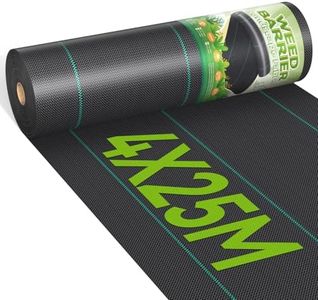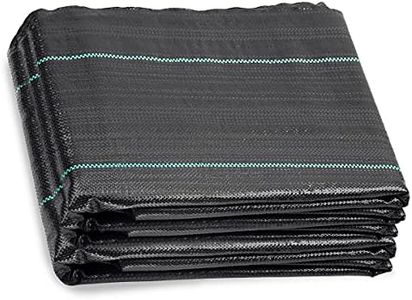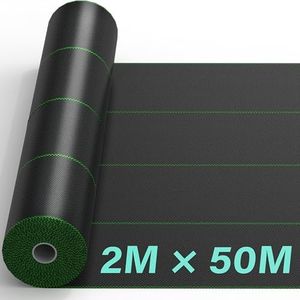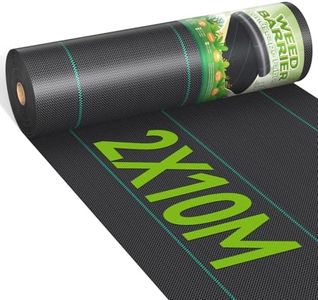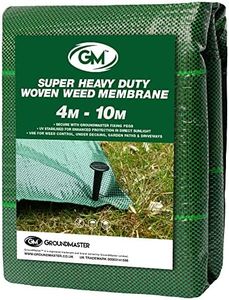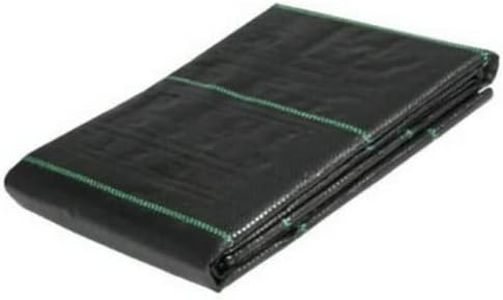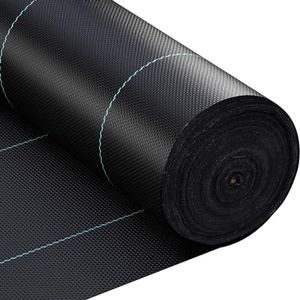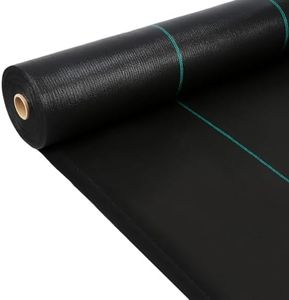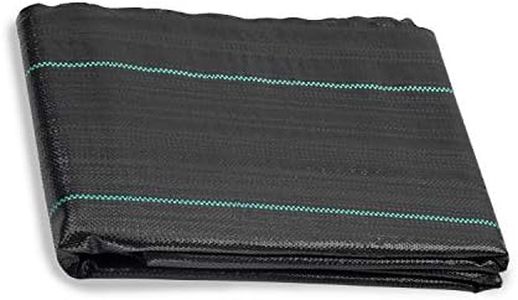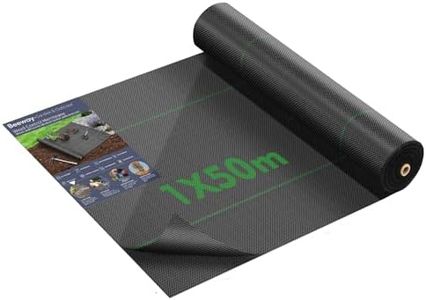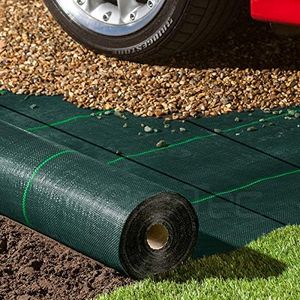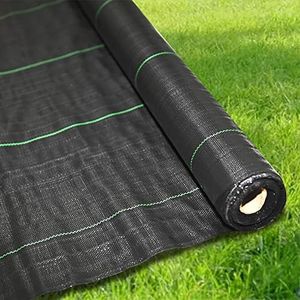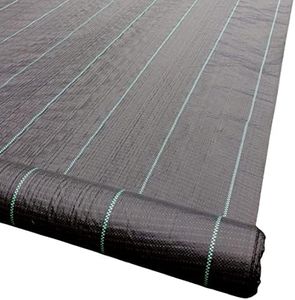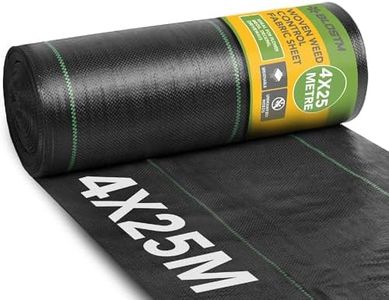We Use CookiesWe use cookies to enhance the security, performance,
functionality and for analytical and promotional activities. By continuing to browse this site you
are agreeing to our privacy policy
10 Best Weed Barrier Fabrics
From leading brands and best sellers available on the web.Buying Guide for the Best Weed Barrier Fabrics
Choosing the right weed barrier fabric is essential for maintaining a healthy and attractive garden or landscape. Weed barrier fabrics help prevent unwanted weeds from growing while allowing air, water, and nutrients to reach your plants. When selecting a weed barrier fabric, consider the specific needs of your garden, the types of plants you have, and the level of weed control you require. Here are some key specifications to consider when choosing the best weed barrier fabric for your needs.MaterialWeed barrier fabrics are typically made from materials like polypropylene, polyester, or burlap. Polypropylene and polyester are synthetic materials that offer durability and resistance to tearing, making them ideal for long-term use. Burlap is a natural material that is biodegradable and environmentally friendly but may not last as long. Choose a material based on your preference for durability and environmental impact.
ThicknessThe thickness of the weed barrier fabric is measured in mils (thousandths of an inch). Thicker fabrics (5-10 mils) provide better weed control and are more durable, making them suitable for areas with heavy foot traffic or aggressive weeds. Thinner fabrics (1-4 mils) are easier to handle and install but may not offer as much protection against tough weeds. Consider the level of weed control you need and the ease of installation when choosing the thickness.
PermeabilityPermeability refers to the fabric's ability to allow water, air, and nutrients to pass through to the soil. High permeability fabrics ensure that your plants receive the necessary resources to thrive while still blocking weeds. Low permeability fabrics may restrict water and air flow, potentially harming your plants. Choose a fabric with high permeability if you have plants that require regular watering and nutrient access.
UV ResistanceUV resistance is the fabric's ability to withstand exposure to sunlight without degrading. Fabrics with high UV resistance will last longer and maintain their effectiveness over time. If your garden or landscape is exposed to direct sunlight for extended periods, opt for a fabric with strong UV resistance to ensure longevity and continued weed control.
Ease of InstallationSome weed barrier fabrics are easier to install than others, depending on their weight, flexibility, and size. Lightweight and flexible fabrics are easier to cut and lay down, making installation quicker and simpler. Heavier and stiffer fabrics may require more effort and tools to install. Consider your comfort level with installation and the tools you have available when choosing a fabric.
BiodegradabilityBiodegradable weed barrier fabrics break down naturally over time, reducing environmental impact. These fabrics are typically made from natural materials like burlap or treated paper. While biodegradable fabrics are eco-friendly, they may need to be replaced more frequently than synthetic options. If environmental sustainability is a priority for you, consider choosing a biodegradable fabric.

